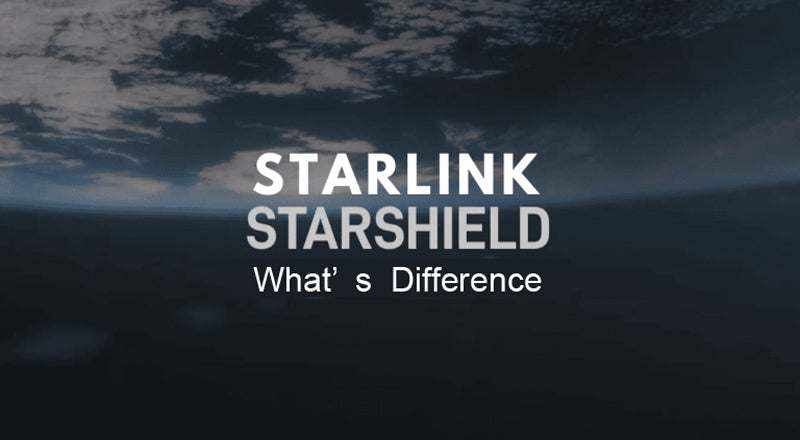
What's the difference between Starlink and Starshield?
Share
一、Starlink vs. Starshield: Key Differences
1. Starlink
- Purpose: Mainly serves civilian and business markets with international high-speed internet.
- Users: Households, businesses, remote areas, aviation (in-flight WiFi), maritime (ship communications), etc.
-
Features:
- Low-latency, high-speed broadband (50-500 Mbps, up to 1 Gbps in some regions).
- Thousands of Low Earth Orbit (LEO) satellites for global coverage.
- Operates on Ku, Ka, and E-band frequencies.
- User-installed terminals (e.g., satellite dishes).
Starlink Long Wall Mount For Starlink Gen3
2. Starshield
- Purpose: Focused on government and military applications, offering secure communications, remote sensing, and defense services.
- Users: U.S. military, NATO, and allied government agencies.
-
Features:
- Enhanced encryption and secure communications to prevent interception/jamming.
- Supports military-grade data transmission (battlefield comms, missile warning, intelligence gathering).
- May carry dedicated sensors (e.g., infrared, radar) for reconnaissance.
- Collaborates with the U.S. Space Force (USSF) for national security missions.
3. Summary
- Starlink: SpaceX’s civilian internet constellation, aiming for global connectivity.
- Starshield: A militarized version of Starlink, delivering secure, anti-jamming capabilities for defense.
- Both share core technologies (e.g., satellite platforms, launch systems), but Starshield prioritizes security and mission flexibility.
二、Starlink vs. Starshield : Key Datas
1. Satellite Constellation & Scale
| Parameter | Starlink | Starshield |
|---|---|---|
| Satellites Launched | ~6,000+ (2024) | Classified (estimated hundreds) |
| Target Constellation | ~42,000 (long-term) | Undisclosed (likely thousands) |
| Orbit Altitude | 340–570 km (LEO) | Similar (LEO, possibly varied) |
| Satellite Mass | ~260–300 kg (V2 Mini) | Likely heavier (military payloads) |
| Design Lifetime | 5–7 years | Extended (hardened for military use) |
2. Communication Performance
| Metric | Starlink | Starshield |
|---|---|---|
| Download Speed | 50–500 Mbps (peaks >1 Gbps) | Classified (optimized for military) |
| Upload Speed | 10–50 Mbps | Enhanced (tactical use) |
| Latency | 20–50 ms | Potentially <20 ms (combat-critical) |
| Frequency Bands | Ku/Ka/E-band (civilian) | Likely X/S-band (anti-jamming) |
| Encryption | AES-256 (commercial) | NSA-certified quantum-resistant |
3. Terminal Comparison
| Feature | Starlink (Civilian Terminal) | Starshield (Military Terminal) |
|---|---|---|
| Size | ~0.5m diameter (standard dish) | Compact/ruggedized (field-deployable) |
| Power Use | 50–100W | Higher (due to encryption modules) |
| Mobility | Fixed/mobile (vehicles/ships) | Full-motion tracking (jets/tanks) |
| Cost | $599(Hardware) + 120/month | Classified (estimated $10,000+/unit) |
